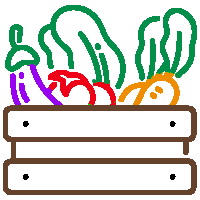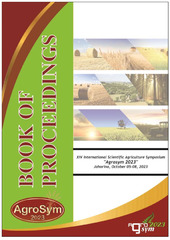Приказ основних података о документу
Effects of the use of different fertilization rates and microbiological products on wheat yields
| dc.creator | Cvijanović, Vojin | |
| dc.creator | Bajagić, Marija | |
| dc.creator | Petrović, Mladen | |
| dc.creator | Đurić, Nenad | |
| dc.creator | Đurđić, Igor | |
| dc.creator | Stanković, Miloš | |
| dc.date.accessioned | 2023-12-19T12:23:19Z | |
| dc.date.available | 2023-12-19T12:23:19Z | |
| dc.date.issued | 2023 | |
| dc.identifier.isbn | 978-99976-816-1-4 | |
| dc.identifier.uri | http://RIVeC.institut-palanka.rs/handle/123456789/813 | |
| dc.description.abstract | Common wheat (Triticum aestivum L.) is a crop predominantly used in food and feeds. Modern agricultural production implies rather an irrational use of large amounts of pesticide and mineral fertilizers, significantly diminishing the quality of agricultural land, and negatively affecting the environment, food quality and human health. In order to diminish adverse effects of intensive agricultural production, farmers around the world incline to an increased use of microorganisms to reduce the use of mineral fertilizers and pesticides to some extent. Agricultural production is facing certain requirements to reduce chemical inputs in order to protect the environment, produce safe and profitable food. This situation is additionally aggravated by climate changes that require many practices to adapt accordingly. The experimental research was carried out during 2016-2019 at the “PKB Agroekonomik” Institute. Field operations were done with typical agricultural practices, and four variants of fertilization were set up. Prior to sowing, 400 kg ha-1 NPK 15:15:15 was applied. Different rates of UREA 46% N were used in spring top-dressing of the crops. Aside of mineral fertilizer, microbiological products with active microorganisms were also used for topdressing. Two wheat varieties – Ratarica and Pobeda were used. The goal of the research was to determine the impact of different rates of fertilizer and microbiological products on productive and morphological properties of wheat. | sr |
| dc.language.iso | en | sr |
| dc.publisher | East Sarajevo : Faculty of Agriculture | sr |
| dc.relation | info:eu-repo/grantAgreement/MESTD/inst-2020/200045/RS// | sr |
| dc.rights | openAccess | sr |
| dc.source | Book of proceedings : XIV International Scientific Agriculture Symposium "AGROSYM 2023", Jahorina, 2023 October 05 - 08 | sr |
| dc.subject | wheat | sr |
| dc.subject | effective microorganisms | sr |
| dc.subject | yield | sr |
| dc.subject | fertilizer | sr |
| dc.title | Effects of the use of different fertilization rates and microbiological products on wheat yields | sr |
| dc.type | conferenceObject | sr |
| dc.rights.license | ARR | sr |
| dc.citation.epage | 370 | |
| dc.citation.spage | 365 | |
| dc.identifier.fulltext | http://RIVeC.institut-palanka.rs/bitstream/id/2603/ND18.pdf | |
| dc.identifier.rcub | https://hdl.handle.net/21.15107/rcub_rivec_813 | |
| dc.type.version | publishedVersion | sr |


